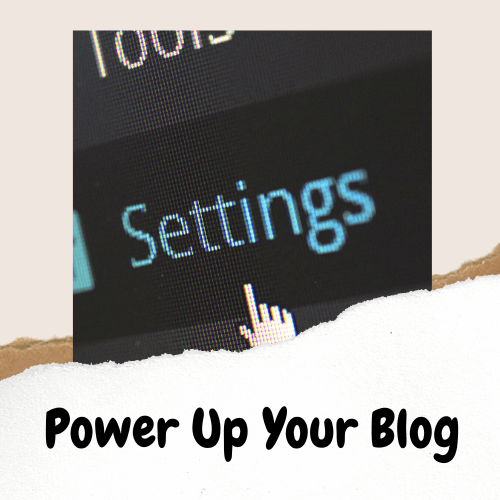How to Start a Blog For Affiliate Marketing in 16 Steps
Want to know how to start a blog for affiliate marketing but just don’t know where to begin?
In this informative guide, we’ll walk you through the entire process of creating an affiliate marketing blog from scratch, ensuring success and profit.
By following these actionable steps, not only will your affiliate blog be set up correctly, but it will also help generate income through strategic promotion of products or services as well.
So, let’s look at how to create a blog for affiliate marketing in 2024!
Key Takeaways
- Choosing a profitable niche is the first step to starting an affiliate marketing blog. It’s important to research potential niches, analyze competitors, and narrow down your focus for better credibility.
- Identifying and understanding your target audience is crucial in creating high-quality content that aligns with targeted affiliate offers and increases conversions.
- Finding and applying for reputable affiliate programs within your niche can maximize earning potential through higher commission rates, exclusive discounts or promotions, and additional perks.
- Selecting relevant products or services that solve a problem or provide value to your audience is a big key to building trust with readers. While maintaining transparency about affiliate partnerships according to FTC guidelines.
Understanding Affiliate Blogging
This page have some affiliate links. In other words, if you buy from my links, I may get a commission.
Affiliate blogging is a type of digital marketing where bloggers earn commission by promoting and referring readers to products or services using unique referral links.
What Is Affiliate Blogging?
Affiliate blogging is a highly effective content marketing strategy that allows bloggers to promote products or services on their blogs and earn commissionswhen readers click on their unique affiliate links or make a purchase.
This approach brings together three key players: the product/service provider, the affiliate blogger, and the reader-turned-buyer.
Take for example this.
An affiliate blogger might write about pet care tips while promoting specific pet supply products available through an online retailer.
This monetization method is popular among content creators because it provides them with an additional income stream without requiring substantial extra work.
In fact, around 84% of bloggers choose to use affiliate marketing as a means to generate earnings from their blogs.
How Much Can You Earn From Affiliate Marketing?
Earning potential from affiliate marketing varies greatly depending on factors such as your niche, audience size, and promotional strategies.
In general, newer bloggers can expect to earn around $5,000 per year as they begin building their audience and refining their approach.
However, once an affiliate blog gains traction and establishes a loyal following, annual earnings can increase significantly.
As you grow in skill and develop more effective marketing techniques tailored to your specific niche and audience preferences, financial gain becomes even more achievable.
Keep in mind that successful affiliate bloggers often diversify their income streams by promoting various products or services that cater to multiple target groups.
Common Affiliate Marketing Mistakes To Avoid
It’s essential to sidestep potential pitfalls as you navigate the world of affiliate marketing. Here are some common mistakes content marketers should avoid:
- Choosing products before defining your blog’s focus: Choosing which products to promote without a clear theme can create a disorganized blog and make it difficult for your audience to understand.
- Failing to research and understand your target audience: Knowing your readers’ wants, needs, and pain points help create relevant and valuable content that drives conversions.
- Promoting low-quality or irrelevant products: It is important to make sure that the products you endorse are not only relevant to your niche and audience’s interests, but also of high quality and usefulness.
- Overdoing promotional content: Balance promotional posts with informative, engaging, non-salesy content to maintain reader trust. Focus on delivering useful content for your readers.
- Not disclosing affiliate relationships: Always disclose your affiliate partnerships clearly by following the FTC guidelines. Transparency is key for building trust among readers.
- Ignoring SEO best practices: Proper keyword research, on-page optimization, and link-building strategies will boost organic traffic to your blog and enhance affiliate commissions.
- Focusing solely on one traffic source: Diversify your traffic sources by using different promotional methods like social media, email marketing, guest posting, etc., to reach a wider audience.
- Neglecting your analytics: Regularly track data such as clicks, conversions, and revenue from each affiliate promotion to optimize campaigns and improve performance over time.
- Inconsistency in producing content: Blogging is all about good content. So don’t approach this without a content plan. You need to maintain a consistent posting schedule so that readers keep coming back for more and build loyalty towards your blog.
- Jumping between niches or changing focus frequently: To gain more credibility with readers who value specialized knowledge, it’s best to focus on one specific niche and become an expert in that area.
By avoiding these common affiliate marketing errors, you can set yourself up for greater success as a content marketer.
Do this, you can improve your strategy and achieve better results.
How to Start an Affiliate Marketing Blog
To get started with affiliate blogging, choose a niche and validate it, identify your target audience, find and apply for affiliate programs, select the products/services you want to promote, register a domain name, and choose WordPress.org as your blog platform.
Confused? Let’s cover the steps and show you how to start a blog for affiliate marketing glory.
Step 1: Choosing A Niche And Validating It
Choosing a niche topic is the first step in starting an affiliate blog. Here is how to do it:
- Determine Your Interests: Choose a topic that you are passionate about or have expertise in. This will make it easier to create high-quality content consistently.
- Research Potential Niches: Use tools such as Google Trends, BuzzSumo, and Ahrefs to research topics related to your interests. This will help you find out what people are searching for and what content already exists.
- Check for Profitability: You’re in this to make money. So look at the income potential in your chosen niche by analyzing the commission rates of affiliate programs related to that niche. You can even check out what your competitors are doing to generate income.
- Validate Your Niche: Once you have identified a potential niche, validate it by conducting keyword research to determine if there is enough search volume and demand for that topic.
- Analyze Competitors: Check out blogs already covering your chosen niche topic to see what they are doing well and what gaps exist in their content offerings.
- Narrow Down Your Niche: Based on your research and analysis, narrow down your niche so that it is specific enough to differentiate yourself from competitors but broad enough to meet audience needs.
By following these steps, you can choose a profitable and sustainable niche for your affiliate blog that aligns with both your interests and audience preferences.
Step 2: Identifying Your Target Audience
To be a successful affiliate blogger, it’s crucial to identify and understand your target audience.
This includes analyzing the demographics, interests, problems, and needs of potential readers who are likely to engage with your blog content.
One way you can identify your target audience is by creating buyer personas for them.
These personas represent fictional versions of ideal customers that allow you to really get into the mindset of your potential readership.
Knowing exactly what motivates and interests them makes it much easier to create compelling content that aligns with targeted affiliate offers.
Step 3: Finding And Applying For Affiliate Programs
Now, let’s take a look at the third step in starting an affiliate marketing blog: finding and applying for affiliate programs.
- Look for Affiliate Programs within Your Niche: Start by researching your niche and identifying suitable affiliate programs. Many companies have their own affiliate programs, so check out their websites or use an affiliate network like Amazon Associates or ShareASale to find products that match your niche.
- Consider Affiliate Commission Fees: Different programs will offer different commission fees. So compare and choose the one that offers the best rates for you. Remember to consider other factors like payment methods and minimum payout thresholds as well.
- Check Program Requirements: Some affiliate programs may require you to meet certain criteria before joining, such as having a certain number of website visitors or followers on social media platforms.
- Apply for the Programs: Once you have found suitable programs, submit applications to each one separately, following their respective guidelines and answering any questions asked. Be prepared to provide information about your blog’s traffic, audience demographics, marketing strategies, and content creation process.
- Wait for Approval: After submitting your application, you may need to wait several days or even weeks before hearing back regarding your approval status.
Remember to continue searching for new potential affiliate programs even after you start promoting products on your blog while keeping track of which ones are performing better than others using Google Analytics or other tracking tools.
By following these steps, you can find and apply for affiliate programs with reputable brands in your niche. As a result, you can increase your earning potential through commission fees.
Step 4: Selecting The Products/Services You Want To Promote
When it comes to selecting products/services to promote on your affiliate blog, there are several things to consider. Here are some tips to help you choose the right offerings:
- Ensure that the products/services align with your niche and blog topics, so that they will be of interest to your readers.
- Do some research on the products/services so you can get an idea of what you will be promoting. Look for reviews, feedback from customers and industry experts, and any potential issues or concerns.
- Check the commission rate for each product/service being offered by the affiliate program. Higher commission rates can lead to greater profits.
- Consider any additional perks or incentives offered through working with a specific affiliate program. For example, do they provide exclusive discounts or promotions?
- Choose products/services that solve a burning issue or provide value to your audience. This will make them more likely to purchase through your affiliate link.
- Be sure that you truly believe in the quality of the products/services you promote, as this will show in how you write about them on your blog.
To increase your chances of success and gain the trust of your audience, consider these factors when selecting which products/services to promote on your affiliate marketing blog.
With those tiny important details said. Let’s look at how to start a blog for affiliate marketing.
Step 5: Registering A Domain Name
Registering a domain name is an essential step in starting your affiliate marketing blog.
A domain name gives your website its unique identity and allows people to find you online.
Ideally, you want to choose a domain name that’s memorable, easy to spell, and relevant to your niche.
Once you’ve come up with a suitable domain name, the next step is registering it.
There are many registrars online where you can purchase a domain name. Some popular ones include Namesilo, and Bluehost (which we’ll discuss more in Step 7).
One more thing. Be sure to check if the domain name you want is available before purchasing it.
Remember that your domain name will play an important role in building brand recognition and credibility over time. So make the time for it. It’scrucial!
Step 6: Choosing WordPress.org
Choosing WordPress.org as your blogging platform is a wise move for several reasons.
Firstly, it is an open-source content management system that provides you with full control of your blog.
Another advantage of using WordPress.org is the wide range of plugins available to help power up and customize your site.
You see. These plugins can improve functionality by adding features like social sharing buttons, contact forms, and more.
Using WordPress.org also allows for better search engine optimization (SEO) because the platform offers more customization options than free blogging platforms do.
Overall, choosing WordPress.org gives you complete control over branding, SEO optimization, and added website features through its variety of themes and plugins available to make affiliate marketing on its blogging platform seamless and effortless.
This allows you to provide valuable information about products/services promoted on the website/blog.
Setting Up Your WordPress Blog
Here’s the fun part. Setting up your WordPress blog is an important step in affiliate marketing.
With Bluehost hosting, a suitable theme, and essential plugins installed, you’ll be able to create an engaging platform that will attract traffic and convert readers into buyers.
Step 7: Hosting Your Blog With Bluehost
Once you’ve selected your domain name and decided on WordPress.org as your website platform, it’s time to choose a hosting provider.
Bluehost is a reliable and user-friendly web hosting service that offers affordable plans for WordPress users.
One advantage of using Bluehost is that their plans include a free domain name, SSL certificate, and high uptime, making it easy to get started with minimal upfront costs.
And for only $2.95 a month, it is very affordable to create a blog for affiliate marketing (see Table A below).
They also offer various hosting options depending on your needs (shared, VPS, or dedicated hosting) and automatic installation and updates for WordPress sites.
Now that’s how to start an affiliate blog quickly.
| BASIC | CHOICE PLUS | ONLINE STORE | PRO | |
|---|---|---|---|---|
| Price | $2.95/mo* | $5.45/mo* | $9.95/mo* | $13.95/mo* |
| Regular | $10.99/mo | $19.99/mo | $24.95/mo | $28.99/mo |
| Hosting | 10 GB SSD Storage | 40 GB SSD Storage | 100 GB SSD Storage | 100 GB SSD Storage |
| Websites | 1 | Unlimited | Unlimited | Unlimited |
| Free Domain | 1st Year | 1st Year | 1st Year | 1st Year |
| Custom WP Themes | Yes | Yes | Yes | Yes |
| SSL Certificate | 1st Year | 1st Year | 1st Year | 1st Year |
| Website Backup | No | Yes | Yes | Yes |
Table A : Summary of Bluehost pricing. Visit the official Bluehost page for the latest pricing offers.
Don’t Miss This:
Step 8: Installing A Suitable Blog Theme
Choosing the right theme for your affiliate marketing blog is crucial because it sets the tone and style of your website.
A suitable theme not only looks professional but also provides a good user experience for your readers.
For example, if you promote outdoor gear, choosing a nature-inspired or adventure-themed template would make sense.
On WordPress.org, there are numerous free and premium themes to choose from, each with different layouts, colors, and features.
It’s important to consider what features matter most to you and align with the overall look you’re trying to achieve on your site.
According to recent studies conducted by HubSpot in 2021, more than half of all website traffic comes from mobile devices such as smartphones and tablets.
This means that having a responsive website design that can adapt seamlessly across all screens should be one of the top priorities when selecting a suitable theme for your affiliate blog.
If you want a premium theme that gives you the flexibility to customize your website design, Elegant Themes is worth checking out.
Step 9: Installing Essential Plugins
Now that you’ve chosen your niche and set up your domain name and WordPress blog, it’s time to install some essential WordPress plugins that can help with various aspects of affiliate marketing.
Here are some recommended plugins to consider:
- Pretty Links: Pretty Links is a URL shortener that also tracks clicks on your affiliate links. This plugin can help make your links look more professional and easy to remember.
- WPRocket: Installing a caching plugin like WPRocket can help speed up your website, which is important for user experience and search engine optimization (SEO).
- Jetpack: Jetpack is a popular plugin that provides various features such as security and site stats. It’s an all-in-one solution for many essential WordPress needs.
- Yoast SEO: Yoast SEO can help optimize your content for search engines by providing keyword suggestions, analyzing readability, and more.
- UpDraftPlus: What can I say. You need to back up your affiliate blog and this plugin will do it for you.
By installing these essential plugins, you can streamline and optimize your affiliate marketing efforts on your WordPress blog for maximum success in the long run.
Creating Engaging Content
To successfully start affiliate marketing with a blog, creating engaging content that draws in the right audience is key.
In this section, we will cover everything from choosing your niche and identifying target audiences to keyword research and consistently generating high-quality content that converts readers into buyers.
Step 10: Create Cornerstone Pages
Creating cornerstone pages is an important step in launching a successful affiliate marketing blog.
These are the foundation of your website and act as guides for readers, providing them with comprehensive information about specific topics related to your niche.
For example, if you’re running a beauty blog, some possible cornerstone pages could cover skincare basics, makeup application tips, or haircare routines.
These pages provide an opportunity to link out to other relevant content on your site and promote affiliate products where appropriate.
And to add more credibility to your website, you must include the following essential pages to your blog: About, Contact, Privacy Policy, and Terms of Use.
Step 11: Building Content Based On Your Niche And Affiliate Offerings
You’ve covered your niche research. You’ve figured out the burning issues of your ideal customer. You’ve identified your affiliate offerings.
Now, it’s time to push out valuable content that is relevant to your niche. This is crucial in building engagement with your audience, building the relationship, and promoting your affiliate offerings.
Here are some tips on how to create compelling content for your affiliate blog:
- Create Content Themes: Based on your research, create different themes around which you can create content. For example, if your niche is fitness, some content themes could be “How-to Fitness Guides,” “Top 10 Exercises You Can Do at Home,” or “The Best Equipment for At-home Workouts.”
- Develop a Content Calendar: Plan out a calendar of topics for upcoming blog posts based on the themes you’ve identified. Make sure these align with the affiliate offerings that you want to promote.
- Write Engaging Content: Use persuasive writing techniques such as storytelling, using visuals like images or videos, and including examples from real-life experiences. Make sure the tone is informative but conversational so that readers can easily connect with it.
When you follow these steps, you can create content that resonates with readers and promote the affiliate offerings in your niche effectively.
Remember always to put yourself in the shoes of your target audience, and write compelling copy that they are looking to solve. to increase conversions on your site.
Step 12: Keyword Research
Keyword research is integral to successful affiliate blogging.
By identifying popular search terms and phrases related to your niche, you can optimize your content for search engines and increase traffic to your blog.
Use tools like Google Keyword Planner or Ahrefs to find relevant keywords with high search volumes, low competition, and high relevance to your content.
It’s important not to overuse or stuff keywords into your content; instead, focus on using them naturally within sentences.
And, don’t forget about those long-tail keywords.
You see. These longer phrases (low-hanging fruit keywords) often have lower search volume but have higher intent from the searcher.
This means the conversion will be higher.
So go for the easy wins and find low-hanging fruit keywords that most competitors will not go for.
I suggest chasing question-type keywords like ‘how to start a blog for affiliate marketing’ because it is more specific, has a lower search volume, and has less commercial value for the bigger players in your niche.
This gives you the chance to fill the gaps overlooked, build your blog’s topical authority, and over time, get ranked for more terms. Especially, the commercial intent ones.
But do your homework and see if your chosen keywords are easy or hard.
Incorporating long-tail keywords into blog posts can improve your overall SEO value while also reaching a highly targeted audience who are more likely to convert into customers.
Step 14: Creating Search-Optimized Content
Search engine optimization (SEO) is crucial for affiliate bloggers to get found online.
By optimizing your content with relevant keywords, you increase the chances of ranking higher in search engines when readers search for topics related to your niche.
Once you have identified these keywords, incorporate them into your blog posts strategically.
Avoid awkwardly stuffing them into the content, as this can negatively impact readability and user experience.
Instead, naturally weave them into low-hanging fruit keywords, header tags (H1, H2, H3), meta titles, meta descriptions, image alt tags, image file names, and throughout the body of each post.
This not only helps improve visibility but also makes it easier for readers to find valuable information on your blog.
Step 15: Consistently Generating High-Quality Content
This was mentioned earlier, but it’s worth saying it again.
Consistently generating high-quality content is so important. Make that crucial for the success of your affiliate blog.
It’s not just about quantity, but also about providing value to your audience in a way that is engaging and informative.
Consider creating content that covers the fundamental aspects of your niche
From there, build out different types of content such as how-to articles, listicles, product reviews, comparisons, survey results, or guides.
It’s important to establish a consistent posting schedule so that readers know when new content will be available and can rely on you as a trusted source of information in their field.
Step 16: Promoting Your Blog
It goes without saying. If no one is reading it, then your content is pooped.
You see, starting a blog for affiliate marketing is not just about content. It is also about getting it noticed and read.
Promoting your blog is essential for getting readers and increasing traffic.
Below, we’ll cover different strategies like building links, social media engagement, and email list building to help grow your blog’s audience.
Increasing Blog Traffic
One of the biggest challenges for any blogger is driving traffic to their website.
There are many ways to increase your blog’s visibility, but it takes time and effort to get there.
Firstly, optimize your content using relevant keywords and meta descriptions.
Secondly, build inbound links by reaching out to other bloggers in your industry and guest posting on their sites.
Thirdly, social media platforms like Facebook, Twitter, Instagram, and Pinterest (this one is a mix of image-based social and user components) allow bloggers to connect with audiences beyond the confines of their own websites.
Lastly, don’t forget about email marketing!
Build up a list of subscribers by offering something valuable such as a free e-book or newsletter subscription then keep them engaged with regular updates on new content and promotions related to your affiliate products.
Build Links
One of the ways to promote your affiliate blog is by building links. Here are some strategies for doing so:
- Link to other authoritative sites in your niche: By linking to high-quality content from other reputable sites, you’re signaling to search engines that your site is trustworthy and relevant. And you’re finding something useful for your readers.
- Guest posting: Writing guest posts for other sites in your niche can help build relationships with other bloggers and generate backlinks to your site. But be sure to guest post on a relevant niche.
- Broken link building: Find broken links on other sites and offer to replace them with a link to your awesome content.
- Participate in online communities: Join forums and groups related to your niche and participate in conversations. Help members who want answers. This can help establish you as an authority and attract backlinks to your site.
- Create shareable content: Develop epic content that people will want to share on social media or link to from their own websites.
Building links is an important aspect of affiliate marketing success (and SEO), as it helps drive traffic and increase the visibility of your blog.
By using these strategies, you can improve the quality of links pointing toward your site, which will ultimately lead to higher revenue earnings.
Building Engagement Through Social Media
Social media is a powerful tool to build engagement with your blog audience and drive traffic to your website. Here are some tips for using social media effectively:
- Choose the right platform: Select social media platforms where your target audience spends their time.
- Consistency is key: Post regularly and use a content calendar to help you stay organized.
- Use visuals: Include eye-catching images or videos in your posts to grab attention.
- Engage with your followers: Respond to comments, messages, and mentions promptly and try to spark conversations.
- Share valuable content: Share not only your own content but also industry news, tips, and other relevant information that your audience will find helpful.
- Use hashtags: Hashtags help increase the visibility of your posts by making them searchable.
- Collaborate with others: Work with other bloggers or influencers in your niche to cross-promote each other’s content and grow both of your audiences.
- Analyze results: Track analytics on each platform to see what types of posts perform best and adjust your strategy accordingly.
Remember, building engagement (and an audience) takes time and effort, so be patient and consistent in utilizing social media as part of your overall affiliate marketing strategy.
Top marketing automation software for bloggers and small businesses.
Pinterest Marketing
Pinterest can be a great tool for promoting blogs related to affiliate marketing.
It is a visual platform that allows users to save and organize images, videos, and links known as pins.
By creating boards around specific niches or topics related to the products you promote, you can attract potential customers who are interested in those topics.
You can also optimize your pins by using targeted keywords in your descriptions and titles to increase visibility in search results.
Remember that not all niches or audiences may be well-suited for Pinterest marketing.
Do some research beforehand to determine if your target audience uses Pinterest regularly and what types of content they engage with most frequently.
And finally, make sure the images you use on Pinterest are visually appealing, high-quality, and relate directly to the product or service you are promoting.
Email List Building
Building an email list is a crucial part of any successful affiliate marketing strategy. You’d be silly to ignore it.
By offering valuable content to readers in exchange for their contact information, bloggers can expand their reach and build trust with their audience.
To make the most out of email list building, it’s important to offer a reader something free. Something valuable. Truly valuable that a reader wants to give up their email address.
This could be anything from a free e-book to access to an exclusive course or webinar series.
Whatever it is, make sure it aligns well with the topics covered on your blog and offers real value for your audience.
And when they do sign up, you can lead with more free content and build a relationship trust so that you can promote your affiliate offerings.
Paid Advertising (Optional)
If you’re looking to give your blog a boost and attract more readers fast, paid advertising can be a great option.
Platforms like Google Ads and Facebook Ads allow you to target specific audiences based on demographics, interests, and behaviors. Sweet.
And the best part?
You can start for as little as 5 bucks a day.
However, it’s important to approach paid advertising with caution. Without careful planning, it can quickly become expensive without delivering results. Real fast.
I made a huge mistake once. Here’s what I did wrong.
I didn’t set a daily budget (dumb). I didn’t have the right offer.
And it was a costly mistake.
However, paid advertising can quickly increase traffic and revenue for your affiliate blog by using targeted ads with clear calls-to-action (CTAs) that urge users to click through or sign up for email lists.
Just keep an eye on your R.O.A.S. (return on ad spend).
There you have it. You now know how to create a blog for affiliate marketing the right way.
Remember, affiliate blogging is a long game. Be patient. Because it will take time to build an engaging audience.
And while you’re being patient and all, you need to keep in mind the following.
Optimize And Grow Your Blog
Continuously improving your affiliate blogging strategies is key to optimizing and growing your blog.
Keep Improving Your Strategies
Finally, keep improving your strategies as you go along. Always stay focused.
It’s essential to track your results and see what works well for your blog and audience.
Regularly auditing your content and checking in on how it’s performing is crucial when engaging in affiliate marketing blogging.
Consistent improvement workflows not only benefit SEO rankings but also grow positive engagement rates with potential customers.
Ultimately leading to higher sales conversion rates.
Tracking Your Results
As mentioned in the last section. In order to succeed in affiliate blogging, it’s crucial to track your results regularly.
One way to do this is by using Google Analytics or other tracking tools to monitor website traffic, where the visitors are coming from, and how long they stay on your site.
Another essential metric is conversion rates – how many readers click on a link and then make a purchase.
Tracking your results provides valuable insights into what’s working and what isn’t, allowing you to improve your affiliate marketing efforts over time.
An example of how you can use insights is to understand why some product reviews didn’t get much attention even though they had a large audience. This information can help you adjust the tone of voice used in future blog posts or consider choosing different products instead of sticking to a path that isn’t leading to sales.
How to Start an Affiliate Blog – FAQs
What is affiliate marketing and how does it work with a blog?
Affiliate marketing involves promoting other people’s products or services on your website or blog in exchange for a commission fee.
By joining an affiliate program, you can gain access to various products relevant to your niche and earn money by linking customers to those products through customized referral links.
How do I choose which niche to focus on when starting a blog for affiliate marketing?
Choosing the right niche depends on several factors, including personal interest, competition level, market trends, and potential profitability.
And you need to be researching. This means conducting thorough research of industry-specific keywords, search volumes, and competitors as it can help identify gaps in the market where you can establish yourself as an expert.
Can I promote multiple products from different affiliates at once on my blog?
Yes, but it is important to ensure that all the products being endorsed are cohesive and align well with each other within your specific niche.
Promoting too many unrelated items could result in confusing readers about what exactly your site is offering them.
Do I need any technical skills or knowledge before launching a blog for affiliate marketing?
Although some technical knowledge, such as understanding HTML coding basics, can be helpful when creating websites or customizing layouts, there are user-friendly blogging platforms available, such as WordPress.
These platforms require no prior experience and can produce professional-quality blogs that are suitable for online promotion through SEO tactics, such as keyword targeting and backlink acquisition efforts.
You can also increase your presence online through social media channels or periodic email blasts as your traffic grows organically over time.
How to Start a Blog for Affiliate Marketing 2024 – Conclusion
Starting a blog for affiliate marketing can be a lucrative way to monetize your content and generate an extra stream of income. Passively.
By following the steps outlined in this guide and putting in the effort to create engaging and informative content, you can attract a targeted audience that is more likely to convert into sales.
It’s crucial to choose an affiliate program with a good payment structure and always be transparent with your readers about any affiliate promotions.
Consistently generating high-quality content, promoting it, and building backlinks can also help improve your search engine ranking, leading to increased traffic and ultimately greater revenue potential.
If you want to know how to start a blog for affiliate marketing using a roadmap then read this page.
Disclosure: This post may contain affiliate links, which means I’ll receive a commission if you purchase through my links, at no extra cost to you. Please read full disclosure for more information.
You Might Want to Check This Out Too
Resources To Grow Your Business With
Bluehost
Bluehost is a great starting point for beginners or bloggers who want to switch to a reliable web hosting service. And it gives you the best bang for your buck - starting at $2.95 a month*.
With the entry-level hosting plan, you'll get a high up-time, reliable customer support, FREE domain name (first year) and 30 day money back guarantee.
You can sign up with Bluehost here.
WPX Hosting
It's a web-hosting service I love using. It specializes in WordPress hosting, and depending on what package you opt for, you can host 5 or more sites on one account. The best bit is - the quick turnaround in support is top notch.
For bloggers who have an established blog, this is a fantastic option.
You can learn more about this service here.
Aweber
Building an email list of a growing audience is essential for the longevity of any business. This autoresponder service is easy to use, and it is a great starting point for someone looking to kickstart their email campaign.
Hi, I’m Jason Ou (surname aka, Oh). I am a Solopreneur and Blogger. My mission is to help fellow entrepreneurs (like you) to profit from their passion online. Let’s connect on Facebook now.










